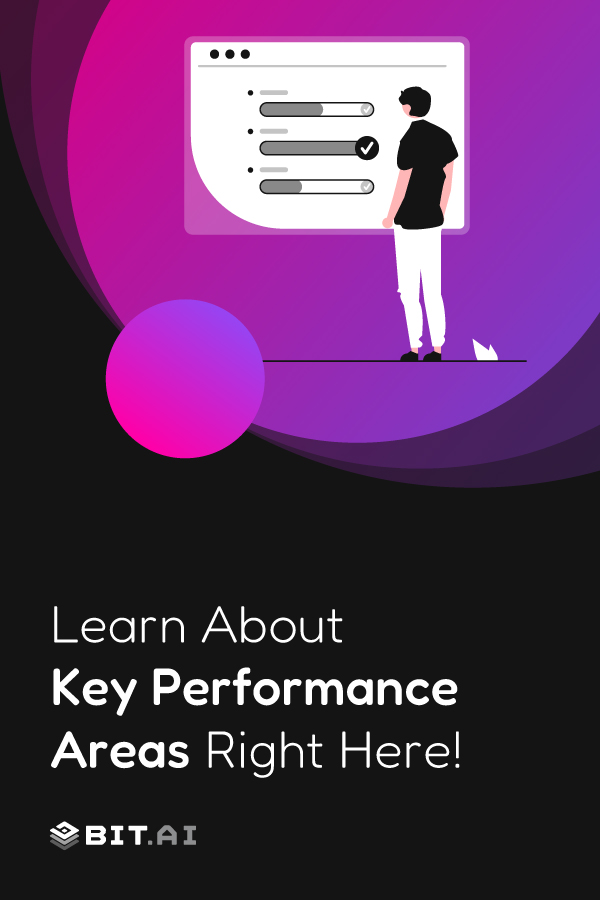The key performance area is a vital part of managing a project and it focuses on managing specific areas that drive the organization’s performance and completing the project successfully. It ensures the employees know their roles and responsibilities while completing the project.
In this cutthroat competition, the one thing that sets you apart and determines your success is your data. But to use this data fully, you must help your executives extract the right business intelligence from this data. As if you cannot make a good decision with the help of data, it’s of no use.
Key performance Areas (KPAs) provide a clear guide for the growth from sales target to customer satisfaction. In this article, we’ll explore the power of KPAs, unveil their benefits, and share real-life examples that inspire you to unlock your full potential. Get ready to elevate your performance and dive into the realm of limitless possibilities.
What is a Key Performance Area (KPA)?
Imagine a business as a well-orchestrated symphony, with each employee playing a crucial role in creating harmony. Now, picture the Key Performance Areas (KPAs) as the sheet music that guides each individual’s performance.

KPAs encompass the essential tasks and responsibilities an employee, project team, or organization holds. They serve as a guide that directs efforts towards achieving organizational goals and objectives.
🚀 Want to turn KPAs into measurable success? Use Bit.ai to organize, collaborate, and monitor KPIs effortlessly.
Let’s dive into the significance of KPAs in the business world. Firstly, KPAs provide clarity and focus. They establish a framework that defines what needs to be done and sets expectations for performance. By clearly outlining responsibilities, employees can understand their specific areas of influence and contribute effectively. This leads to enhanced productivity and efficiency, as everyone knows their role in the larger picture.
Consider a project manager overseeing a construction venture. Their KPA would revolve around completing the project with the specified quality, adhering to the timeline, and staying within the allocated budget. With these KPAs in mind, the project manager can align their efforts accordingly, ensuring that every decision and action contributes to the successful completion of the project.
Efficient use of resources is another critical key performance area. Organizations can maximise their resource utilisation by scheduling tasks according to resource availability and assembling a team with the requisite skills and knowledge. This minimises wastage and ensures that tasks are completed effectively and efficiently.
According to a study by Gallup, companies that effectively define performance expectations are 3.5 times more likely to engage their employees.
🚀 Pro Tip: Review KPIs regularly to ensure they align with your KPAs and evolving business goals.
Key performance areas serve as the backbone of any successful business. They provide clarity, focus, and direction, enabling employees and teams to work towards shared objectives. KPAs enhance productivity, promote a positive work environment, and optimize resource utilization by aligning individual roles and responsibilities with organisational goals.
So, just as a symphony requires each musician to play their part impeccably, businesses thrive when everyone understands and excels in their respective KPAs.
Glossary
- Key Performance Area (KPA): A specific area of a business or organization that is critical to its success. KPAs are used to focus efforts and measure performance in areas that directly impact the overall objectives and goals.
- Key Performance Indicator (KPI): A quantifiable measure used to evaluate the success of an organization, employee, or process in achieving key objectives. KPIs are often tied to KPAs to monitor progress.
- SMART Goals: A framework for setting clear and achievable objectives. SMART stands for Specific, Measurable, Achievable, Relevant, and Time-bound.
- Benchmarking: The process of comparing business processes and performance metrics to industry bests and best practices from other companies.
- Performance Management: A continuous process of identifying, measuring, and developing the performance of individuals and teams and aligning performance with the strategic goals of the organization.
- Balanced Scorecard: A strategic planning and management system used to align business activities to the vision and strategy of the organization, improve internal and external communications, and monitor organizational performance against strategic goals.
- Competency: A combination of skills, knowledge, and behaviors that an employee needs to effectively perform their job roles and responsibilities.
- Operational Efficiency: The ability to deliver products or services in the most cost-effective manner without compromising quality. It involves optimizing processes, reducing waste, and improving productivity.
- Performance Appraisal: A regular review of an employee’s job performance and overall contribution to the organization. Performance appraisals help identify strengths, areas for improvement, and opportunities for development.
Know More 💌 How to Make a Business Plan in Simple Steps?
Types of Key Performance Areas
There are different types of key performance areas with different features and focus areas. It’s important to understand these types in order to tailor the performance metrics effectively. So let’s discuss the four types of KPAs and explore their potential.
1. Finance and Monetary KPA
When it comes to the world of finance and monetary value, you enter a realm where numbers hold the key to success. It’s all about the generated revenue, expenditures, net profits realized, and financial trends that can significantly impact the performance of individuals and departments.

You must provide your executives with easy access to revenue projections versus actual growth to meet their expectations. So, think if your company launches a new product line, and you want to measure its success. By breaking down the revenue figures by product, industry, or client, you’ll gain valuable insights into the areas driving your success and those that require improvement.
But revenue is just one thing. Your profit margins act as the pulse of your business, revealing its overall health. Executives always seek a snapshot of these margins, as even the slightest dips and valleys can indicate critical trends or potential issues.
Consider adding more vital business metrics to your dashboard to create a comprehensive financial reporting system. Expenses are crucial to track—how much money is flowing out? By carefully monitoring expenses, you can identify areas where cost reductions or optimizations are necessary. Stretch goals are equally important. These ambitious targets fuel innovation and facilitate long-term changes within your organization.
So, finance and monetary KPA is not merely about crunching numbers—it’s about providing your executives with the tools to navigate the sea of financial data confidently. Now let’s move on to the second KPA i.e. client satisfaction.
📌 Want measurable success? Use this SMART Goals template to make your KPAs crystal clear and result-driven.
2. Client’s Satisfaction KPA
The Client’s Satisfaction Key Performance Area (KPA) is a crucial aspect that can make or break your company’s reputation. Let’s delve into this fascinating realm and explore the various types of key performance areas that drive client satisfaction.
Your customers’ feedback is like a treasure trove of insights that can unlock the path to improvement. By actively seeking feedback through surveys or product reviews, you gain valuable information to refine your offerings and enhance the customer experience. For example, if multiple customers highlight a specific issue, such as slow shipping, you can take immediate action to rectify it and exceed their expectations.
Statistically speaking, did you know that increasing customer retention rates by just 5% can boost your profits by 25% to 95%? That’s right! Happy customers will return and do word-of-mouth marketing about your exceptional products or services. These loyal customers become your brand ambassadors, advocating for your business and attracting new clients through positive recommendations.
Now, here are some key performance areas (KPAs) that allow you to monitor and measure client satisfaction:
- Complaint rate
- Returning Customers
- Customer satisfaction score
- Customer retention rate
- Recommendation rate
Remember, client satisfaction isn’t just a one-time endeavor; it’s an ongoing commitment. By continuously monitoring these KPAs and actively working to improve the customer experience, you can foster long-term relationships, boost customer loyalty, and drive business growth.
So, unleash the power of client satisfaction KPA and witness your business thrive in the realm of delighted customers and glowing recommendations!
3. Market Image
Everyone wants to make their brand exceptional in the marketplace. They are eager to be known, recognized, and cherished by the target audience. That’s where the market image becomes a crucial Key Performance Area (KPA). It wields the power to shape and propel your organisation’s performance towards success.

Think of your market image as the impression you leave on the minds of your customers. Craft a brand identity that increases engagement and sales with your target audience. A strong market image ensures that your name springs to their lips effortlessly when people think of a specific product or service.
To achieve this coveted top-of-mind status, you must build brand awareness. You’ll have to give them a reason to choose your brand over the competitors. Don’t forget to share on social media about your product’s unique features and feedback of happy customers, as 90% of consumers are more likely to purchase from brands they follow on social media. Collaborate with influencers and industry leaders who align with your brand values, as their endorsement can amplify your reach and credibility.
Now, ask yourself a few questions:
- How do your customers emotionally connect with your brand?
- Are they viewing you in a positive light?
Positive emotional connections foster loyalty and advocacy, contributing to a strong market image. Check whether your customers actively seek out your content, share it with others, and participate in discussions. This engagement is a testament to the strength of your market image.
Remember to consistently stay honest about your brand values and deliver high-quality products and exceptional service. Doing so’ll gradually build a market image that exudes excellence, fostering customer trust and loyalty. And next, let’s discuss about the last KPA, i.e. efficiency in performance.
Read This 👉 Go-To-Market Strategy Guide for Businesses
4. Performance Efficiency
Performance Efficiency is a crucial Key performance area that showcases your ability to meet goals and achieve optimal results with the available resources. It’s like being a skilled conductor, orchestrating a symphony of productivity. It’s like keeping the flow of a river steady and uninterrupted.
To effectively manage on-site or remote teams, you must have a centralized report where everyone’s progress is clearly outlined. This report lets you know your journey towards the success of the project.
It’s also necessary to think of employees’ happiness and productivity. Happy employees are like fuel that powers your business’s engine. Monitoring employee satisfaction through surveys, feedback sessions, or retention numbers can provide valuable insights into their well-being. Employees who are content and motivated are more likely to be productive and deliver exceptional results.
To summarize, Performance Efficiency is about driving progress, achieving goals, and keeping clients satisfied by utilizing available resources effectively. By measuring the completion percentage for departmental goals, ensuring inventory matches production, meeting customer deadlines, and nurturing employee happiness, you can enhance your overall performance efficiency and elevate your business to new heights.
Remember, a symphony of success begins with the conductor’s expertise in managing resources and orchestrating harmony.
KPA Vs KPI: The Differences
Understanding the difference between KPA and KPI is like realizing that a flourishing garden results from blooming flowers and the careful tending and nurturing of the soil, watering, and sunlight.
Key performance areas focus on the specific areas or domains within an organization where performance needs to be managed effectively. They represent the key functions, responsibilities, or goals for which individuals or teams are accountable. KPAs provide a broader perspective by highlighting the essential activities or actions that must be consistently carried out to achieve desired outcomes.

On the other hand, key performance indicators are measurable metrics or data points that quantify progress or success in relation to specific objectives or targets. They serve as performance benchmarks or indicators, providing tangible evidence of how well an organization or individual is performing. KPIs are typically derived from the KPAs and reflect the desired results or outcomes within those areas.
Let’s delve deeper into the distinction between KPA and KPI with a relatable example. Suppose you own a fitness studio aiming to increase membership. Your KPI would be the number of new members who join each month. However, your KPA would involve the activities necessary to attract and convert prospects into members.
These activities could include conducting outreach campaigns, hosting trial sessions, or offering personalized consultations. Each action is like a puzzle piece contributing to the final picture of success. By closely monitoring your KPAs, you gain valuable insights into the effectiveness of your strategies and identify areas that require improvement.
So, embrace the power of KPA and KPI as your trusted companions on the voyage to success, guiding you through uncharted territories and helping you discover the treasures that await you.
The Benefits of Key Performance Areas
Key Performance Areas (KPAs) offer many benefits that can significantly enhance the efficiency and success of an organization. Let’s delve into these advantages and explore how they can positively impact individuals and the overall business.
1. Evaluation of Finance

KPAs facilitate financial evaluation, ensuring that tasks are assigned appropriately, and cost estimation is realistic. You can accurately gauge the financial progress by comparing the estimated cost against the actual expenditure during the project life cycle. When the actual expenses align closely with the planned budget, it signifies that the project is moving in the right direction financially. This not only aids in better financial management but also prevents unnecessary overspending.
2. Foster a Culture of Appreciation
Moreover, KPAs provide a comprehensive overview of expectations from teams or the organization as a whole. While they are not solely result-oriented, they are a general benchmark to determine the project’s success. Establishing KPAs enables recognition of achievements, ensuring employees feel valued and motivated. When employees perceive that their efforts are acknowledged, it cultivates a positive work environment that fuels productivity and engagement.
3. Minimizes Distraction

In the project environment, it’s not uncommon for team members to be swayed by unproductive tasks that divert their focus from project objectives. This accumulation of non-essential activities wastes precious time and effort. KPAs act as a checkpoint, ensuring employees adhere to their assigned tasks and perform as expected. By actively curbing deviation and minimizing distractions, KPAs help teams stay on track and maintain their productivity levels.
4. Identify Areas of Improvement
By referencing the job descriptions, they facilitate the identification of areas requiring enhancement. This valuable insight empowers organizations to develop action plans and implement strategies to boost performance in subsequent iterations. As a result, predictions become more accurate, and the organisation’s overall effectiveness improves, driving continuous growth and progress.
5. Help in Organizational Decisions
By clearly outlining who is responsible for what, they shed light on areas that require policy review and refinement. This ensures that the organization makes well-informed choices, leading to the development of robust policies and ultimately supporting its long-term success.

So, Key performance areas provide numerous benefits that foster financial accountability, appreciation, focus, improvement, and informed decision-making. By leveraging KPAs effectively, organizations can optimize their operations, boost employee morale, and pave the way for sustained growth and prosperity. So embrace the power of KPAs and unlock your organization’s full potential!
Conclusion
And there you have it, guys! We’ve explored the kingdom of key performance areas (KPAs), learnt their types, understood their distinction from key performance indicators (KPIs), and uncovered their numerous benefits to businesses. I hope you’ve learnt much about the significance of setting clear expectations, tracking progress, and fostering a culture of achievement.
If you have questions or confusion along the way, don’t worry! Bit.ai is here to help you, offering assistance and answers to your queries. So don’t hesitate to reach out to us on Twitter @bit_docs. Now go on and unlock the full potential of KPAs in your organization!
FAQs
Q1. What is a Key Performance Area (KPA)?
A KPA is a functional area that plays a critical role in an employee’s or department’s contribution to overall organizational goals. It’s a category of responsibility where performance needs to be consistently strong.
Q2. How are KPAs different from KPIs?
While KPAs identify key focus areas for a role or department, KPIs are measurable values that indicate the effectiveness of those areas. KPAs are qualitative; KPIs are quantitative.
Q3. What are some common KPAs in HR?
- In HR, typical KPAs include:
- Time taken to fill positions
- Quality of hire
- Employee engagement and satisfaction scores
- Training completion and impact
Q4. What are the meanings of KPA and KRA?
KPA is the area of responsibility, whereas KRAs outline what is needed in those areas. An example of a KPA could be called Customer Experience, and the KRA would be to maintain a 90 percent customer satisfaction score. KRAs tend to be more outcome-oriented, and performance reviews often incorporate them.
Q5. Do KPAs apply in the performance appraisals?
Yes. Indeed, they are essential for effective performance appraisals. They assist in measuring the activities of the employees in terms of whether or not they have performed their major duties and responsibilities according to the organizational purpose.
Keep Reading & Learning 📚
- Performance Improvement Plan (PIP): What is it & How to Create it?
- Gap Analysis: Definition, Techniques & How to Perform it?
- OKRs Vs. KPIs: Breaking Down The Types and Differences!
- KPI Dashboard: Definition, Tools, and Tips!
- 12 Marketing KPIs Every Marketing Team Should Monitor!
- 10 OKR Examples You Must Not Miss Out!



